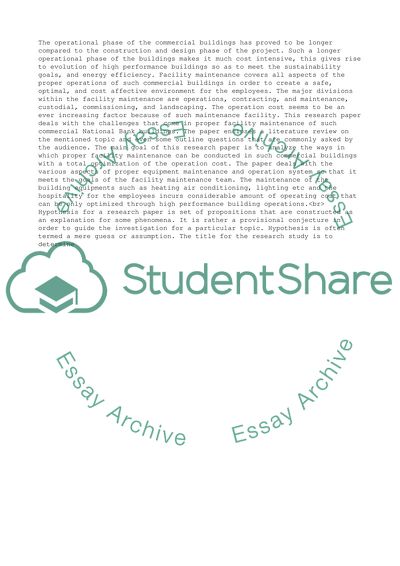Cite this document
(“Facilities Maintenance & Operation Cost Optimization for Commercial Research Paper”, n.d.)
Facilities Maintenance & Operation Cost Optimization for Commercial Research Paper. Retrieved from https://studentshare.org/business/1636509-facilities-maintenance-operation-cost-optimization-for-commercial-buildings-this-study-will-be-applied-for-national-commercial-bank-buildings
Facilities Maintenance & Operation Cost Optimization for Commercial Research Paper. Retrieved from https://studentshare.org/business/1636509-facilities-maintenance-operation-cost-optimization-for-commercial-buildings-this-study-will-be-applied-for-national-commercial-bank-buildings
(Facilities Maintenance & Operation Cost Optimization for Commercial Research Paper)
Facilities Maintenance & Operation Cost Optimization for Commercial Research Paper. https://studentshare.org/business/1636509-facilities-maintenance-operation-cost-optimization-for-commercial-buildings-this-study-will-be-applied-for-national-commercial-bank-buildings.
Facilities Maintenance & Operation Cost Optimization for Commercial Research Paper. https://studentshare.org/business/1636509-facilities-maintenance-operation-cost-optimization-for-commercial-buildings-this-study-will-be-applied-for-national-commercial-bank-buildings.
“Facilities Maintenance & Operation Cost Optimization for Commercial Research Paper”, n.d. https://studentshare.org/business/1636509-facilities-maintenance-operation-cost-optimization-for-commercial-buildings-this-study-will-be-applied-for-national-commercial-bank-buildings.


